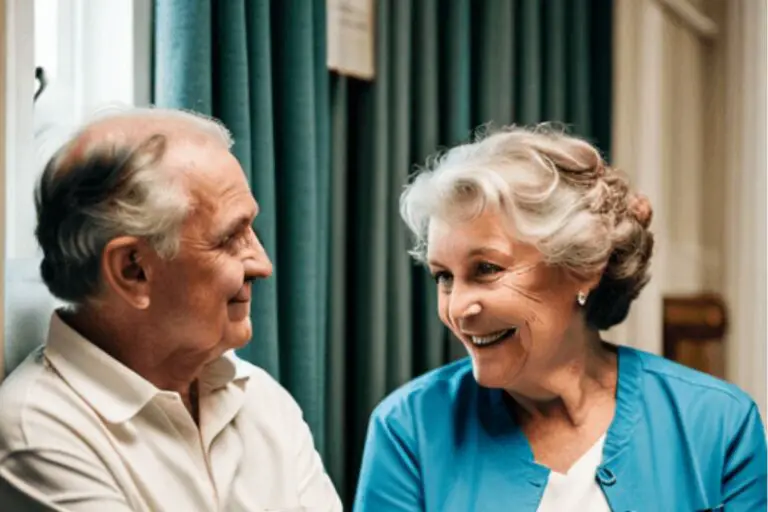
Summary
- Recognising Abuse: Health and social care professionals must be vigilant in identifying various types of abuse, including physical, emotional, sexual, financial, neglect, and self-neglect, to protect vulnerable individuals.
- Signs of Abuse: Common indicators of suspected abuse include unexplained injuries, withdrawal from social activities, anxiety, poor hygiene, and financial discrepancies.
- Reporting Protocols: Professionals should follow established procedures for reporting suspected abuse, documenting observations, and ensuring confidentiality while sharing necessary information with appropriate authorities.
- Preventive Measures: Creating a safe environment, providing training, empowering individuals to speak up, and conducting regular monitoring are essential strategies for preventing abuse and ensuring quality care.
Abuse in health and social care is an important issue. Recognising and addressing it is essential to ensuring the well-being of vulnerable individuals. Suspected abuse refers to situations where there are signs or suspicions that someone is being harmed or mistreated. This can occur in various settings, including hospitals, care homes, or private residences.
Understanding what constitutes suspected abuse, its signs, and the necessary actions to take are essential for everyone involved in care provision. The signs of suspected abuse can often be subtle and difficult to recognize, making it crucial for care providers to be knowledgeable and vigilant. By understanding the Care Act overview, care providers can be equipped with the tools and resources to identify, report, and address suspected abuse. This knowledge can help protect the well-being and safety of those under their care, ensuring that any instances of abuse are swiftly and appropriately handled.
Types of Abuse
Abuse can take many forms. Each has distinct characteristics and signs. Here are the primary types of abuse:
Physical Abuse
Physical abuse involves intentional bodily harm. This can include hitting, slapping, choking, or using physical restraints improperly. Signs may include bruises, cuts, burns, or broken bones. Unexplained injuries or those that don’t match the given explanation are red flags.
Emotional or Psychological Abuse
This type of abuse affects an individual’s emotional health. It may involve threats, intimidation, humiliation, or constant criticism. Signs can include sudden changes in behaviour, becoming withdrawn, or showing fear towards a particular person.
Sexual Abuse
Sexual abuse includes any sexual activity without consent. This can range from inappropriate touching to rape. Indicators might include bruises around genitals, unexplained sexually transmitted infections, or changes in behaviour, such as becoming overly sexualised or withdrawn.
Financial Abuse
Financial abuse involves misusing or stealing someone’s money or property. This can occur through theft, fraud, coercion, or manipulating someone to change their will. Signs include unexplained withdrawals, missing financial documents, or changes in spending habits.
Neglect
Neglect is failing to provide necessary care. This could be intentional or due to lack of ability. It includes not providing food, medical care, or protection. Symptoms include poor hygiene, untreated medical issues, or deteriorating health conditions due to lack of care.
Organisational Abuse
This occurs within institutions, such as care homes. It involves poor care practices, misuse of medication, or neglect of needs due to inadequate staffing or training. Signs include poor living conditions, lack of personal items, and residents looking unhappy or neglected. Unacceptable behaviors may also include physical or emotional abuse, financial exploitation, or infringement on residents’ rights. It is crucial for care homes and institutions to have strict policies in place to prevent and address these behaviors, as well as provide training and support for staff members. Additionally, regular monitoring and oversight from regulatory bodies can help ensure the well-being and safety of residents.
Self-neglect
Self-neglect involves an individual failing to care for themselves. This can include not eating properly, refusing medical treatment, or living in unsanitary conditions. Indicators are extreme dirtiness, untreated health problems, or malnutrition.
Domestic Abuse
Domestic abuse is any form of abuse in a domestic setting, used to control and dominate another person. Signs can be similar to physical, emotional, or sexual abuse, and may include frequent injuries or a partner who is overly controlling.
Signs of Suspected Abuse
Identifying suspected abuse requires vigilance. Here are common signs across different types:
- Unexplained injuries or bruises.
- Withdrawal from normal activities or social interactions.
- Fear of specific individuals or places.
- Anxiety, depression, or sudden changes in mood.
- Poor personal hygiene or inappropriate clothing for the weather.
- Unexplained purchases or financial loss.
- Living in unsafe or unsanitary conditions.
Responsibilities of Health and Social Care Professionals
Awareness and Training
Health and social care professionals must be trained to recognise signs of abuse. Training should cover the types, signs, and appropriate responses to suspected abuse. Continuous education is essential to stay updated.
Reporting and Recording
If you suspect abuse, you must report it. Follow your organisation’s procedures. This usually involves informing a designated safeguarding lead or a supervisor. Recording detailed observations is important. Note physical signs, changes in behaviour, and any conversations that raise concern.
Following Protocols
Organisations will have specific protocols. These may involve contacting local safeguarding boards or the police. It is essential to understand and follow these protocols strictly. Ensure that confidentiality is maintained, but also that the necessary information is shared with the appropriate agencies.
Supporting the Victim
Support the victim by providing a safe environment. Listen to their concerns without judgement. Offer reassurance. Provide information on support services, such as counselling, and ensure they receive necessary medical care.
Legal Framework
Legislation
Several laws in the UK protect individuals from abuse. Key legislations include:
- The Care Act 2014: Provides guidelines for safeguarding adults.
- Children Act 1989 and 2004: Focuses on protecting children from harm.
- Safeguarding Vulnerable Groups Act 2006: Establishes measures for protecting vulnerable groups.
- Mental Capacity Act 2005: Protects and empowers individuals who may lack capacity to make their own decisions.
Regulatory Bodies
Regulatory bodies ensure compliance and investigate abuse:
- Care Quality Commission (CQC): Regulates and inspects health and social care services.
- Local Safeguarding Adults Boards (LSABs) and Local Safeguarding Children Boards (LSCBs): Coordinate local safeguarding practices.
- Disclosure and Barring Service (DBS): Conducts checks to prevent unsuitable individuals from working with vulnerable people.
Preventing Abuse
Creating a Safe Environment
Fostering a safe environment is key. This includes clear policies, regular supervision, and an open culture where concerns are encouraged and taken seriously.
Empowering Individuals
Empower those in care to speak up. Provide information on their rights and how to report concerns. Encourage independence and self-advocacy.
Regular Monitoring
Regularly monitor care practices. Conduct audits and inspections. Ensure that staff follows protocols and that any deviations are promptly addressed.
Examples of Suspected Abuse in Health and Social Care
Understanding suspected abuse can be easier with real-life examples. Let’s explore a hypothetical scenario to illustrate how you might recognise and respond to suspected abuse.
Scenario 1: Mrs. Johnson’s Story
Background
Mrs. Johnson, an 82-year-old woman, lives in a residential care home due to her advanced dementia. She has been living there for the past two years. Her family visits her weekly and has always found her well-cared-for until recently.
Initial Signs of Suspected Abuse
During a routine visit, her daughter, Karen, notices several concerning signs:
- Physical Signs: Mrs. Johnson has multiple unexplained bruises on her arms and legs. When asked about them, she becomes anxious and unable to explain how she got them.
- Behavioural Changes: Karen notices her mother has become more withdrawn and less communicative. Mrs. Johnson, who used to enjoy participating in social activities at the care home, now seems disinterested and prefers to stay in her room.
- Environmental Clues: Karen also observes that her mother’s room is unusually messy and smells unpleasant. Her bed linens appear soiled and have not been changed for several days.
Reporting and Initial Response
Concerned about her mother’s well-being, Karen decides to speak with the care home staff. She asks to speak to the manager, Mrs. Smith.
- Initial Discussion: Karen explains her concerns to Mrs. Smith, pointing out the unexplained bruises, behavioural changes, and lack of cleanliness in the room.
- Staff Reaction: Mrs. Smith promises to look into the matter and reassures Karen that the care home takes such concerns seriously. However, Karen senses hesitation and defensiveness in Mrs. Smith’s response.
Escalation and Formal Reporting
Unconvinced by the initial response, Karen decides to take further action:
- Documenting Concerns: Karen takes photos of her mother’s bruises and the state of her room. She also makes detailed notes of her observations and her conversation with Mrs. Smith.
- Contacting Authorities: Karen calls the local safeguarding board to report her concerns. She provides them with the photos and her notes.
- Professional Intervention: The safeguarding board assigns a social worker, Mr. Patel, to investigate the situation. Mr. Patel visits the care home unannounced, reviews Mrs. Johnson’s care records, and interviews the staff and other residents.
Findings and Actions
Mr. Patel discovers several issues that indicate potential abuse:
- Inadequate Staffing: The care home has been operating with insufficient staff, leading to corners being cut in resident care. This explains the poor living conditions and neglect Mrs. Johnson experienced.
- Poor Training: Some staff members lack proper training in handling residents with dementia, which may have led to rough handling and the resulting bruises.
- Lack of Reporting: Staff members were reluctant to report incidents due to fear of repercussions.
Resolution
- Immediate Actions: The care home is instructed to address staffing levels and provide additional training for handling residents with dementia. Mr. Patel ensures Mrs. Johnson receives immediate medical attention for her bruises and improved care.
- Ongoing Monitoring: The safeguarding board puts the care home under close monitoring. Regular checks and unannounced visits occur to ensure compliance and improved standards.
- Support for Mrs. Johnson: A care plan is developed with input from healthcare professionals and Karen. Mrs. Johnson is provided with counselling and activities to help her recover emotionally.
Final Thoughts
Mrs. Johnson’s case features the importance of recognising and acting on suspected abuse. Concerns should always be taken seriously, investigated thoroughly, and addressed promptly. Families and care professionals must work together to protect vulnerable individuals and ensure they receive the care they deserve.
By understanding the signs and knowing how to respond, you play an important role in safeguarding the well-being of those in health and social care settings.
Scenario 2: Mr. Evans’ Story
Background
Mr. Evans, a 75-year-old man with limited mobility and early-stage Parkinson’s disease, lives at home with the help of a professional carer, Mike, who visits daily. Mr. Evans’ son, Peter, manages his father’s finances and medical appointments but lives in another city, visiting only once a month.
Initial Signs of Suspected Abuse
During a monthly visit, Peter notices several worrying signs:
- Financial Irregularities: Peter discovers multiple large, unexplained withdrawals from his father’s bank account. When he asks Mr. Evans about these withdrawals, his father appears confused and unable to provide an explanation.
- Physical Appearance: Mr. Evans looks unusually thin and frail. Peter notices that his father’s clothes are dirty and that there are bedsores visible on his body.
- Emotional Changes: Mr. Evans seems anxious and unwilling to talk about his daily routine. He becomes visibly distressed when Mike, the carer, arrives.
Reporting and Initial Response
Deeply concerned, Peter decides to address these issues immediately:
- Direct Conversation: Peter confronts Mike about his father’s condition and the financial discrepancies. Mike responds defensively, claiming that Mr. Evans insisted on handling his finances and was often resistant to care.
- Initial Documentation: Peter takes notes on his observations, documenting the physical state of his father and the financial irregularities. He also takes photographs of the bedsores and obtains a copy of the bank statements.
Escalation and Formal Reporting
Unsatisfied with Mike’s explanations, Peter decides to take formal action:
- Contacting Health and Social Services: Peter reports his concerns to the local adult safeguarding team. He provides them with his documentation and explains the situation in detail.
- Involving Healthcare Professionals: Peter arranges for Mr. Evans to see his GP for a thorough medical examination. The GP confirms that Mr. Evans is malnourished and that the bedsores are severe.
- Investigating Authorities: The safeguarding team assigns a social worker, Emma, to assess the situation. Emma visits Mr. Evans at home, interviews him privately, and reviews care records and financial transactions.
Findings and Actions
Emma’s investigation uncovers several troubling facts:
- Financial Abuse: Mike had been exploiting Mr. Evans’ vulnerability to steal money. He coerced Mr. Evans into giving him access to his bank account and made large, unauthorised withdrawals.
- Neglect: Mike was not providing Mr. Evans with adequate care. He was skipping visits, leaving Mr. Evans without necessary hygiene, nutrition, and medical attention.
- Emotional Abuse: Mike used intimidation to silence Mr. Evans, contributing to his anxiety and reluctance to speak up.
Resolution
- Immediate Protective Measures: The safeguarding team ensures that Mike is immediately removed from his position, and a new, vetted carer is assigned to Mr. Evans. Protective measures are put in place to monitor Mr. Evans’ care and well-being.
- Financial Safeguards: Peter takes control of his father’s finances, working with a financial advisor to secure his father’s assets and prevent further exploitation. The bank is notified of the fraudulent activities, and an investigation is launched.
- Medical and Psychological Support: Mr. Evans receives intensive medical care to treat his bedsores and improve his nutrition. Psychological counselling is arranged to help him recover from the trauma and rebuild his confidence.
- Legal Actions: The authorities pursue legal action against Mike for financial abuse and neglect. This helps ensure that he cannot work with vulnerable individuals again.
Preventive Measures
- Training and Awareness: All caregivers receive additional training on recognising and preventing abuse. The care agency reviews its procedures to ensure better oversight and accountability.
- Regular Checks: Peter arranges for regular independent checks on his father’s care, involving local social services and healthcare professionals to ensure ongoing safety and well-being.
Final Thoughts
Mr. Evans’ story underscores the importance of vigilance and prompt action when suspected abuse arises. Financial abuse, neglect, and emotional abuse can have severe consequences, but with the right steps, they can be identified and addressed effectively.
Families and care professionals must remain alert, communicate transparently, and take swift action to protect vulnerable individuals from harm. Understanding the signs of abuse and knowing how to respond can make a significant difference in someone’s life, ensuring they receive the care and respect they deserve.
Scenario 3: Mrs. Taylor’s Story
Background
Mrs. Taylor is a 67-year-old woman with severe arthritis and mild cognitive impairment. She lives in a care home and relies on carers for daily activities. Mrs. Taylor’s niece, Jane, is her only close family member and regularly visits her aunt to ensure she is well taken care of.
Initial Signs of Suspected Abuse
During one of her regular visits, Jane notices some alarming changes:
- Emotional Signs: Mrs. Taylor seems unusually nervous and jumps at sudden noises. She appears more confused than usual and is reluctant to speak in the presence of certain staff members.
- Physical Evidence: Jane sees that her aunt has unexplained bruises on her arms and thighs. When questioned, Mrs. Taylor is vague and dismissive about the cause, saying she’s just “clumsy.”
- Living Conditions: Jane notices that Mrs. Taylor’s room is not clean. The bedding is dirty, and there’s a strong smell of urine. Mrs. Taylor’s personal hygiene also seems neglected, with unwashed hair and long, dirty nails.
Reporting and Initial Response
Concerned about her aunt’s well-being, Jane decides to act:
- Direct Inquiry: Jane speaks with the carer on duty, Carol. When Jane asks about the bruises and poor hygiene, Carol downplays the issues, saying that Mrs. Taylor often refuses help with personal care.
- Documentation: Jane takes photographs of the bruises and the state of the room. She makes detailed notes of her observations and her conversation with Carol.
Escalation and Formal Reporting
Not satisfied with Carol’s response, Jane decides to escalate the matter:
- Contacting Management: Jane reports her concerns to the care home manager, Mr. Reynolds. She shows him the photos and shares her detailed notes.
- Involving External Authorities: Mr. Reynolds, recognising the seriousness of the situation, contacts the local safeguarding team. A social worker, Sarah, is assigned to investigate the case.
Professional Investigation
Sarah conducts a thorough investigation:
- Interviews: Sarah interviews Mrs. Taylor privately. Initially hesitant, Mrs. Taylor eventually reveals that one of the night staff, Tom, has been rough while assisting her, leading to the bruises. She also mentions feeling intimidated by Tom, which is why she hasn’t reported it.
- Reviewing Records: Sarah reviews care home records and finds inconsistencies in the logs regarding Mrs. Taylor’s care. Some entries seem falsified or incomplete.
- Observations: Sarah observes interactions between staff and residents, noting any signs of neglect or inappropriate behaviour.
Findings and Actions
The investigation uncovers several issues:
- Physical Abuse: Tom has indeed been handling Mrs. Taylor roughly, leading to the bruises. His approach was dismissive and aggressive, causing Mrs. Taylor to feel unsafe.
- Neglect: There were multiple instances where Mrs. Taylor’s personal care needs were not being met. This neglect led to her poor hygiene and the unsanitary conditions in her room.
- Inadequate Response: Carol and other staff members failed to address or report these issues, contributing to ongoing neglect and abuse.
Resolution
- Immediate Protect Measures: Tom is immediately suspended and later dismissed following a disciplinary hearing. Carol and other complicit staff receive mandatory retraining and are placed under close supervision.
- Care Improvements: The care home implements stricter protocols for reporting and addressing abuse. Regular staff training on recognising and handling abuse is mandated.
- Enhanced Monitoring: Sarah ensures ongoing monitoring of the care home. Unannounced visits are conducted to ensure compliance with new protocols.
- Support for Mrs. Taylor: Mrs. Taylor receives medical attention for her bruises and improved personal care. A psychological counsellor is introduced to help her cope with the trauma. Jane is kept informed and involved in her aunt’s care plan.
Preventive Measures
- Training and Education: The care home enhances its staff training programmes, focusing on identifying, reporting, and preventing abuse. Regular refresher courses are scheduled.
- Reporting Systems: An anonymous reporting system is implemented for staff and residents to report concerns without fear of retaliation.
- Family Involvement: The care home encourages more frequent family involvement and establishes regular meetings to discuss residents’ well-being.
Final Thoughts
Mrs. Taylor’s case features the essential role that family members and care professionals play in identifying and addressing suspected abuse. By taking swift action and involving the appropriate authorities, abuse can be stopped, and the well-being of vulnerable individuals can be safeguarded.
It’s essential for everyone involved in health and social care to remain vigilant, communicate openly, and act promptly when they suspect abuse. Through collective efforts, we can ensure a safer and more compassionate environment for those who depend on our care.
Final Thoughts
Suspected abuse in health and social care requires swift, appropriate action. By recognising the signs and understanding the types of abuse, professionals can provide the necessary support and protection.
Continuous training, adhering to protocols, and fostering an environment of transparency are key to preventing and addressing abuse.
It is everyone’s responsibility to ensure that vulnerable individuals receive the care and respect they deserve. Together, we can create safer, more supportive care environments.
Subscribe to Newsletter
Get the latest news and updates from Care Learning and be first to know about our free courses when they launch.






